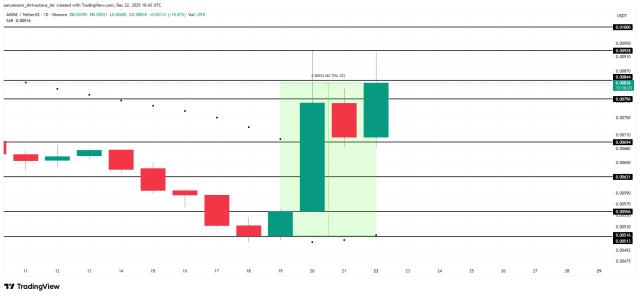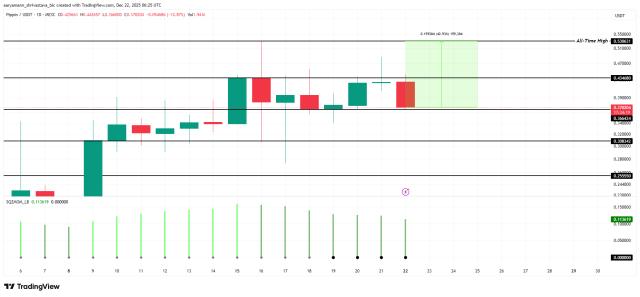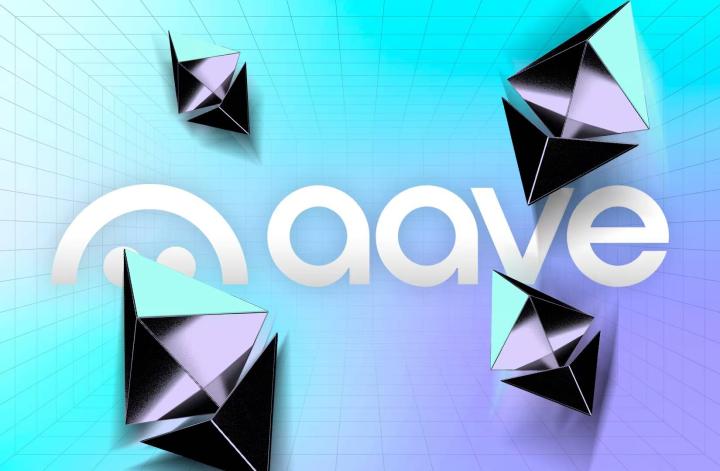Source: Coinbase
Compilation: BitpushNews Mary Liu
Today, we're excited to announce the launch of Base 's testnet, an Ethereum Layer 2 (L2) network that offers anyone, anywhere a secure, low-cost, developer-friendly way to build on-chain Build decentralized applications. Our goal with Base is to make onchain the next online and bring 1 billion users into the crypto economy. To achieve this goal, Base will serve as a home for products on the Coinbase chain and an open ecosystem that anyone can build.

We are incubating Base inside Coinbase, leveraging our past decade of experience building crypto products, with plans to gradually decentralize the blockchain over time. In order to support the road to decentralization, we are building an OP Stack based on Optimism . The vision is to create a standard, modular, Rollup Agnostic superchain powered by Optimism. We do not intend to issue new network tokens.
Developers can already build on Base at base.org . In this post, we'll dive deeper into why Base was built and how we plan to accelerate the cryptoeconomy.
Why should we build Base?
From the earliest days of Coinbase, our secret master plan has been clear and consistent: to create an open financial system that increases economic freedom around the world. Over the past decade, we have completed the first three phases of what we envision: protocols (Bitcoin, Ethereum), building exchanges (Coinbase Exchange) to act as bridges to digital currencies, and creating decentralized applications or " dapps” (Coinbase and Coinbase Wallet). Over the past year, in addition to continuing our investments in the first three phases, we have increasingly focused on unlocking the final phase: applications for the open financial system. In particular, we asked ourselves what is needed to create an environment where thousands of people are actually useful to emerge dapps that can bring 1B+ users into the global crypto economy?

Before we feel we can answer this question for our clients, we want to say a little bit about what this is for us. Currently, most Coinbase products are not written as smart contracts, they mostly leverage the same application infrastructure that other web2 companies use. While they allow customers to access cryptocurrencies, they are not built natively as dapps on an on-chain platform enabled by cryptocurrencies. We've slowly changed this over the past few years: USDC , Coinbase Wallet, and cbETH are examples of native on-chain products that have generated significant user activity and revenue for Coinbase. Going forward, we hope to help our teams build more products like this to take advantage of the full capabilities of the on-chain environment. We hypothesized that being able to get your own team to make this kind of change would be a good incentive for other developers to do the same.
When we talked to internal teams about how to do this, we saw that they were struggling with two seemingly simple problems:
1. How should they build dapps? There are many developer toolkits for writing smart contracts - EVM, Solana 's Rust, Cosmos-SDK, etc. - and our team wasn't sure which of them they should use to build their application. And because we don't have a clear "broad path", we don't have the infrastructure that enables teams to easily start rapid development in a safe manner.
2. Where should they deploy the dapp? Once they choose a toolkit, they can deploy on many different chains - for example, using EVM, they can deploy to Ethereum L1, Ethereum L2, or other chains that provide an EVM execution environment. Our team wasn't sure which of these they should choose, nor how they could ensure that the environment was compatible with other Coinbase products.
We've found that these two issues in many cases cause teams to give up before they even start. Therefore, in the first half of 2022, we ran an internal process to answer these questions and pave the way for internal on-chain development. After extensive conversations with external builders and internal teams, we agreed on three main decisions:
1. EVM serves as the main developer platform for our dapps. The EVM is the dominant environment today, and the vast majority of developers, activity, and liquidity occurs within the EVM environment. Additionally, the EVM already has significant support across the entire Coinbase product suite, meaning new products will be supported by default.
2. The first layer (L1) of Ethereum with the highest locked value dapp. Ethereum has become the most mature, secure and decentralized EVM chain. This makes it an ideal environment for deploying the most security-critical on-chain applications, such as large multi-billion dollar institutional or enterprise use cases.
3. Layer 2 (L2) of Ethereum is suitable for dapps that need to expand. Ethereum prioritizes security and decentralization, resulting in high fees that make it unsuitable for applications designed to reach billions of users. To address this, the Ethereum scaling strategy is to enable chains secured by Ethereum to enable cheaper transactions (commonly referred to as "Layer 2" or L2). We have identified Ethereum L2 as where we will deploy future Coinbase applications, aiming to serve our entire customer base.
While these decisions helped our team start building faster, they also saw the next opportunity: Ethereum L2 is still too expensive today (trading at $0.05-0.25) and there are many L2s, which means our team is still Need to choose between different options. In the second half of 2022, we started investing in EIP4844, which reduces L2 fees by 10-100 times, and we started another process to determine which L2 we should choose as the main home for Coinbase dapps.
When we met with the teams building on Ethereum L2, we were blown away by their creativity and insight, and the collaborative mindset they brought to scaling Ethereum. We're also excited about the multiple approaches they've taken, each bringing new knowledge about how best to scale the crypto economy. Through our conversations, we gained a better understanding of the main challenges holding back L2 security, scale, and adoption. We also improved our mental model for future Ethereum L1 and L2 architectures.
In particular, we started the process with the argument that a single L2 would become the "dominant" and gradually absorb all on-chain activity, creating a near-monopoly situation. With this vision, we initially viewed the problem as "choosing the right ones", and if we chose the "wrong ones", we risked cutting off Coinbase dapps and users from most activity in the ecosystem.
We ended the process with a very different thesis: that there would be many L2s with significant activity, acting as "hubs" for different ecosystems, and gradually increasing their interoperability until they form a "giant" that collectively scales Ethereum. network” or “super chain”.
With a vision for the future, we asked ourselves: In a world with many L2s, can we accelerate Coinbase's mission and the broader crypto economy by building one ourselves? Coinbase has considered launching a chain twice before (2018, 2020), but each time we decided not to. After careful consideration, we decided to agree and launch Base because:
1. Base will accelerate the development of products on the Coinbase chain. By creating more certainty where we build, we eliminate the problems that had been plaguing the team before we started. We've created a base layer that we can layer around other development tools to make building on-chain incredibly easy. With Base, we are committed to making it easier for teams to build on-chain rather than off-chain.
2. Base will bring our customers into the encrypted economy. By creating a fully on-chain environment with Coinbase-level security on Coinbase Orbit, we will be able to bring more activity on-chain. We see bringing users and their assets to Base as a stepping stone to their access to the wider cryptoeconomy. Importantly, we don't want Base to be an island - we want it to be a bridge with deep connections to Ethereum L1, other L2, and even other L1 ecosystems such as Bitcoin, Solana, and Cosmos.
3. Base will increase Coinbase's investment in core encryption infrastructure. With our investment in Base, we now have an even greater incentive to help expand the foundational platform Base is built on. We started with work on EIP4844, and we expect that investment will only increase. We're excited to give back to the core infrastructure that has made business possible for the past decade.
We see Base as a key component of our secretive master plan (Phase 3.5) and believe it will unlock the next generation of dapps, bringing billions of users into the global crypto economy.
How can we build Base to accelerate the broader crypto economy?
At its core, blockchain is very different from what Coinbase products are today — in particular, it's a platform, whereas most everything we've built to date is a product. Building a crypto platform with a vision of decentralization and scale means we need to build on top of these incredible decentralized platforms. Four key principles influenced our decisions as we built Base, and they will continue to guide us for years to come.
A bridge, not an island
We are designing Base to optimize easy and secure access to Ethereum L1, other L2, and other L1 ecosystems such as Bitcoin, Solana, and Cosmos. We encourage them to start with Base, but lead to everything: we see Base as a "bridge" for users to enter the crypto-economy. This is an easy-to-use default on-chain experience that provides access to products on other chains. As Base interoperates with other chains, we will continue to support as many chains as possible across Coinbase products.
open source
The underlying software of the global crypto economy should be fully open source and freely available. Base is built on top of the MIT-licensed OP Stack in partnership with Optimism. We joined as a second core development team working on the OP Stack to ensure it is a public product available to all. We see this toolkit as an open platform where anyone can contribute, fork and extend to help the crypto economy scale.
decentralized
Decentralization is essential for the crypto-economy to remain open, global, and accessible to all. While we have started to incubate Base within Coinbase, we are firmly committed to moving towards full decentralization in the coming years. With the increased resources Coinbase brings to OP Stack, we are confident that Base will move from Phase 0 to Phase 1 Rollup in 2023 and complete Phase 2 Rollup in 2024.
for all
Base's vision is to be an open ecosystem, seeded with Coinbase products, users, and assets. We will work with the wider community to keep the blockchain alive and we are excited to have an incredible community who will contribute to making Base a strong ecosystem.

Builders on Base
This is day one of our journey with Base, and we couldn't be more excited about the incredible community we've built. If you have any thoughts, feedback or questions about our approach, you can join the discussion on our Discord .
How do we move forward?
Our focus now is to run a successful testnet with builders and developers joining the Base ecosystem. We expect this to be an iterative process and look forward to working together to make Base a success.
In the coming weeks, we will share our mainnet roadmap and provide more developer resources for building on Base - stay tuned.
Base, Introduced NFT
We're excited to have a free, open version of Base launched to celebrate the testnet launch and get everyone involved in the broader Base community.
Minting "Base, Introduced" - An NFT commemorating the first launch of Base. 1 per address, free minted on Zora until Sunday midnight EST.
Base Ecological Fund
We also announced the Base Ecosystem Fund, which invests in and supports early-stage projects based on Base that meet our investment criteria. If you are interested, please fill it out here .
Start building on Base now
For more information, welcome to join:
Bitui Discord community: https://discord.com/invite/QSvv7MZ2tz
BitPush TG communication group: https://t.me/BitPushCommunity
Bitpush TG subscription: https://t.me/bitpush
Twitter: https://twitter.com/BitpushNewsCN
This article is from Bitpush, the link to the article: https://www.bitpush.news/articles/3712333 Reprints must indicate the source







